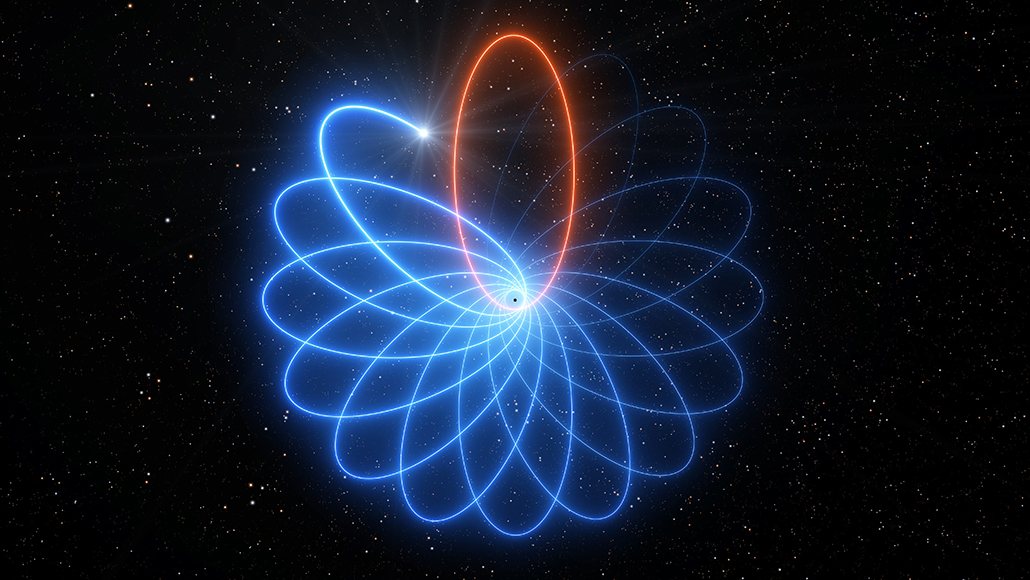Disir
Platinum Member
- Sep 30, 2011
- 28,003
- 9,607
- 910
The first sign that Albert Einstein’s theory of gravity was correct has made a repeat appearance, this time near a supermassive black hole.
In 1915, Einstein realized that his newly formulated general theory of relativity explained a weird quirk in the orbit of Mercury. Now, that same effect has been found in a star’s orbit of the enormous black hole at the heart of the Milky Way, researchers with the GRAVITY collaboration report April 16 in Astronomy & Astrophysics.
The star, called S2, is part of a stellar entourage that surrounds the Milky Way’s central black hole. For decades, researchers have tracked S2’s elliptical motion around the black hole. The researchers previously had used observations of S2 to identify a different effect of general relativity, the reddening of the star’s light due to what’s called gravitational redshift (SN: 7/26/18).
Now, they’ve determined that the ellipse rotates over time, what’s known as Schwarzschild precession. That precession is the result of the warping of spacetime caused by massive objects, according to general relativity. A similar precession in Mercury’s orbit had stumped scientists before Einstein came along (SN: 4/11/18).

 www.sciencenews.org
www.sciencenews.org
Pretty cool stuff.
In 1915, Einstein realized that his newly formulated general theory of relativity explained a weird quirk in the orbit of Mercury. Now, that same effect has been found in a star’s orbit of the enormous black hole at the heart of the Milky Way, researchers with the GRAVITY collaboration report April 16 in Astronomy & Astrophysics.
The star, called S2, is part of a stellar entourage that surrounds the Milky Way’s central black hole. For decades, researchers have tracked S2’s elliptical motion around the black hole. The researchers previously had used observations of S2 to identify a different effect of general relativity, the reddening of the star’s light due to what’s called gravitational redshift (SN: 7/26/18).
Now, they’ve determined that the ellipse rotates over time, what’s known as Schwarzschild precession. That precession is the result of the warping of spacetime caused by massive objects, according to general relativity. A similar precession in Mercury’s orbit had stumped scientists before Einstein came along (SN: 4/11/18).

A star orbiting the Milky Way’s giant black hole confirms Einstein was right
An oddity previously seen in Mercury’s orbit has been spotted in a star circling the supermassive black hole at the Milky Way’s center.
Pretty cool stuff.
